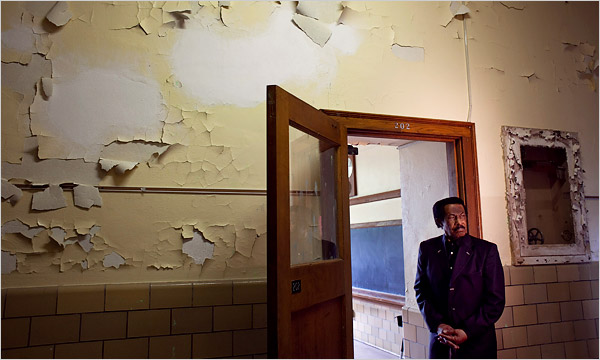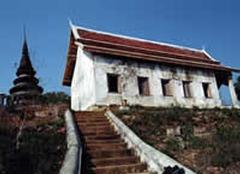Essay QuestionThe QuestionHISTORIC PRESERVATION/HERITAGE CONSERVATION WHAT BUILDING OR GROUP OF BUILDINGS IN YOUR COMMUNITY SHOULD BE PERMANENTLY MAINTAINED AS EVIDENCE OF YOUR COMMUNITY'S SOCIAL AND CULTURAL HISTORY? IDENTIFY THE BUILDING OR GROUP OF BUILDINGS, EXPLAIN ITS VALUE, AND DESCRIBE HOW IT IS USED TODAY OR COULD BE USED IN THE FUTURE. DiscussionAs an introduction to this years topic we are posting the following article, which appeared this spring in the New York Times regarding one Amercian community's efforts to save and regenerate a local building that is a national landmark. The background of the fight to save this building and the innovative approaches that were taken to create a new and lasting use for the structure are indicative of the kinds of efforts that can be made worldwide for any number of different kinds of buildings that merit preservation and conversation. For further thoughts on this year's topic, read comments by 2010 BERKELEY PRIZE jurors. In Purchase of School, Hopes of Saving a Neglected MonumentBy: Susan Saulny Published by: The New York Times, July 20, 2009
TOPEKA, Kan. — The classrooms are haunting in their dusty silence. It has been more than a half-century since Sumner Elementary School, now an abandoned shell of a building, had a brief and ignoble moment in the spotlight for what it would not do: allow a black father from the surrounding neighborhood, Oliver L. Brown, to enroll his daughter Linda in the third grade.
Mr. Brown, along with a group of similarly rejected black parents, brought a lawsuit against the school board here that went on to become one of the landmarks of this country's legal history: Brown v. Board of Education, the outcome of which banned segregation in public schools across the country and set off an era of civil rights progress. "I believe we can make this place a catalyst for inspiration and hope for people," said the new owner, the Rev. W. R. Portee, minister of a nondenominational Christian church based in Los Angeles who bought Sumner at a city auction in April for $89,000. "I want to involve the whole community and people beyond Topeka." Mr. Portee, 70, said he was shocked to learn that Sumner was available for bidding. The Rev. Zaire Thomas, a local minister overseeing a branch of Mr. Portee's church, found the building while driving around Topeka looking for vacant sites that might be rehabilitated for a community center. Mr. Thomas forwarded the Sumner information to Mr. Portee, unaware of its past. "I said, 'Get it!' " Mr. Portee, a former civil rights activist, recalled. " Bid on it!' I knew instantly we had to save that building." It was in dire condition. Last year, the National Trust for Historic Preservation put Sumner Elementary on its list of most endangered sites, concerned about how close a monument of American history was coming to slipping away altogether. The school was named a National Historic Landmark in 1987, along with the formerly all-black school that Mr. Brown's daughter attended, Monroe Elementary. But, according to the National Trust, because Sumner was still in use at the time for classes and Monroe was not, Monroe was selected to house the Brown v. Board of Education National Historic Site, the official commemorative location operated for the public by the National Park Service. Sumner, on the other hand, was largely forgotten. Enrollment dwindled over the years. Then, in another twist having to do with race, Sumner was one of eight schools closed as part of a local desegregation plan that was an effort to satisfy the original Brown case, which was re-opened in the 1980s and not closed until 1999. The school's age and cost of upkeep also worked against it, a spokesman for the school system said. For a while, Sumner was used as storage for the Topeka and Shawnee County Public Library, which bought the building after it closed as a school. In 2002, the city bought the building from the library, with a hope of rehabilitating it. But because the city grew increasingly short on money over the years, the building languished, according to the deputy city manager, Randy Speaker.
Steve Herbert for the New York Times In January, the city put the school up for auction. Mr. Portee's umbrella group, True Foundation World Outreach Ministries, outbid one other potential buyer and the sale was finalized in the spring, Mr. Speaker said. When Mr. Portee and Mr. Thomas hired a landscaper to start cleaning up the grounds this month, the man said he found himself literally in over his head. "I'm 5-11, and the grass was taller than that," Donald Dunbar, the landscaper, said. "I never thought much about the building. But I get cold chills thinking about it now that I know what happened here." Built in 1936 by the Federal Emergency Administration of Public Works, a New Deal government agency, as stated on a plaque in the school's foyer, Sumner has an unusual amount of stone detailing in the Art Deco style. Because of the high quality of the original construction, it retains many of its original features, including light and bathroom fixtures, clocks, carved woodwork and even a marble-rimmed fireplace in the kindergarten. There is no restriction on how the building may be used. Mr. Portee said he envisioned a combination educational site and community center that would be open to the public but run by the church. He is obligated to protect the structure's basic features. "It's a great building, and I have high hopes for the new owners that they can restore it to its former glory," said Amy Cole, a senior program officer at the National Trust for Historic Preservation. "It is certainly deserving both in its historic and architectural significance." While Mr. Portee said he recognized that significance, he also knows that he is facing an uphill battle in these economic times as he begins to apply for grants to begin renovation, starting with very little money in the bank for the job. Eight years ago, the repair bill was estimated to be about $3 million. Now, with extensive rain damage, some vandalism and the increased costs of construction, Sumner's restoration could cost $7 million. Still beaming with purchaser's pride despite the work ahead while touring the grounds recently, Mr. Portee said, "I think it's a bargain." Additional Help and InformationAre you in need of assistance? Please email info@berkeleyprize.org. |
|


 Sumner's own future was less auspicious, however. Closed in 1996, used as storage space, neglected and vandalized, it barely escaped the wrecking ball. But now, a new owner hopes to bring the spotlight back again, and this time the result would be more flattering: plans call for Sumner to be opened to the public as a community center and human rights memorial after renovation next year.
Sumner's own future was less auspicious, however. Closed in 1996, used as storage space, neglected and vandalized, it barely escaped the wrecking ball. But now, a new owner hopes to bring the spotlight back again, and this time the result would be more flattering: plans call for Sumner to be opened to the public as a community center and human rights memorial after renovation next year. The city tried unsuccessfully to sell Sumner several times, and even considered demolishing it at one point.
The city tried unsuccessfully to sell Sumner several times, and even considered demolishing it at one point.